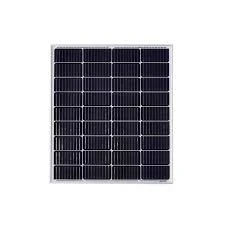mppt
Understanding MPPT Maximizing Solar Panel Efficiency
Maximum Power Point Tracking (MPPT) is a sophisticated technique used in solar energy systems to optimize the power output from photovoltaic (PV) panels. As the name suggests, MPPT is designed to locate the maximum power point (MPP) of a solar cell, ensuring that the energy harvested is as high as possible. In an era of increasing reliance on renewable energy, understanding MPPT and its operation is crucial for the efficiency of solar power systems.
The core principle behind MPPT lies in the relationship between solar irradiance, temperature, and the electric output of a solar panel. Under varying environmental conditions, the voltage and current produced by a solar panel fluctuate. Each panel has a unique MPP that represents the maximum voltage and current at which it can operate efficiently. However, due to changes in sunlight intensity, cloud cover, and temperature throughout the day, this point is not static and must be continually tracked for optimal performance.
.
The importance of MPPT is amplified when we consider the architecture of a solar energy system. Traditional systems without MPPT can suffer from inefficiencies, leading to considerable energy losses throughout the day. In contrast, MPPT technology allows for a more dynamic interaction between the solar panels and the batteries or grid, maximizing energy capture even in less-than-ideal weather conditions. This capability is particularly beneficial during the early hours of dawn or late afternoons when sunlight is weaker.
mppt

MPPT algorithms are the heart of the tracking process and can be categorized into different types, including Perturb and Observe (P&O), Incremental Conductance (IncCond), and Constant Voltage (CV). Each method leverages mathematical calculations to facilitate the tracking process, weighing the cost of operational complexity against the possible gains in efficiency. For example, the P&O method perturbs the operating point and observes changes in voltage and current, adjusting accordingly to find the MPP. On the other hand, the IncCond method dynamically analyzes changes in the incremental conductance to maintain optimal performance.
Of note is the role that MPPT plays in various applications beyond residential solar systems. It is also essential in large-scale solar farms, where thousands of panels must work in unison to provide consistent and reliable power. Enhanced MPPT technology can lead to greater revenue for operators through increased power output, which can offset initial investments more quickly.
Furthermore, the integration of MPPT with smart energy systems and the Internet of Things (IoT) is paving the way for future advancements in solar energy management. With real-time data and analytics, operators can predict energy needs more accurately and manage their resources effectively.
Considering the ongoing global transition toward sustainable energy practices, the standout benefits of employing MPPT technology in solar systems are increasingly clear. MPPT not only improves energy harvesting efficiency but also contributes to the financial viability of solar power, making it a critical component in the quest for cleaner energy solutions.
In conclusion, Maximum Power Point Tracking represents a vital advancement in solar technology. By optimizing the performance of solar panels under various environmental conditions, MPPT systems ensure that we harness the maximum potential from this abundant energy source. As we continue to develop renewable energy technologies, the role of MPPT will remain essential in achieving energy independence and sustainability.
-
Unlocking Energy Freedom with the Off Grid Solar InverterNewsJun.06,2025
-
Unlock More Solar Power with a High-Efficiency Bifacial Solar PanelNewsJun.06,2025
-
Power Your Future with High-Efficiency Monocrystalline Solar PanelsNewsJun.06,2025
-
Next-Gen Solar Power Starts with Micro Solar InvertersNewsJun.06,2025
-
Harnessing Peak Efficiency with the On Grid Solar InverterNewsJun.06,2025
-
Discover Unmatched Efficiency with the Latest String Solar InverterNewsJun.06,2025







